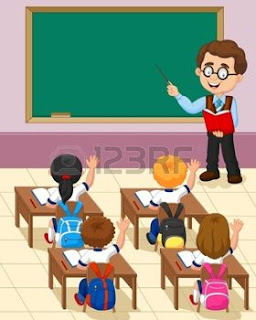In this lesson, we shall see how the teacher expands his options to make himself more effective and relevant in the 21st millennium information age. In particular, the lesson shall respond to questions on student-centered learning approaches in the classroom.
The Traditional Classroom
From the traditional teacher-learning, the teacher stands in front of the very well arranged student chairs. This situation is purposed to maintain classroom discipline and also to allow the teacher to control classroom activities through teacher-led discussions.
However, after spending so much time with the discussion that students get restless, they start talking to each other or simply stare away to lack of attention. Often enough, the teacher has to also manage these kinds of misbehaviour. One way of preventing this situation is to individually give them worksheets for them to work on.
Desiring to gain effectiveness, efficiency and economy in administration and instruction, schools in these developed economies have also adopted the supports of ICTs. Their students have now become active not passive learners, who can interact with other learners, demonstrating independence and self-awareness in the learning process.
Generally the new school classroom environment is characterized by student individually or in groups. They perform computer word processing for text or graph presentation, prepare power-point presentation, search for information on the Internet, brainstorm on ideas, problems and project plans and as needed, the teacher facilitating instruction, also giving individualized instruction to serve individual needs.
Discussion:
1. What can you say to the objection that an SCL environment can be noisy and unwieldy?
ü It may be noisy and unwieldy but if that the best way of letting the learners learn well, such things may be ignored.
2. How can SCL be fun, memorable and healthy?
ü The students enjoy sharing their own ideas resulting to students getting new ideas and information about the topic provided. They have at the same time bonding with each other and that will become memorable. It may lessen their stress to think of other information since others contribute and there is learning in the group.
3. Share/discuss experiences on your e-mail activities
ü I can feel that a technology such as e-mailing is an advanced way of learning here in our place compared to the traditional way of teaching. But sometimes the net is very slow that I, sometimes can’t upload lessons needed to be.
4. Share/discuss experiences on Internet surfing
ü In surfing the net, I’ve enjoyed it since it provides much information plus its own examples.


No comments:
Post a Comment